Marble countertops in the interior
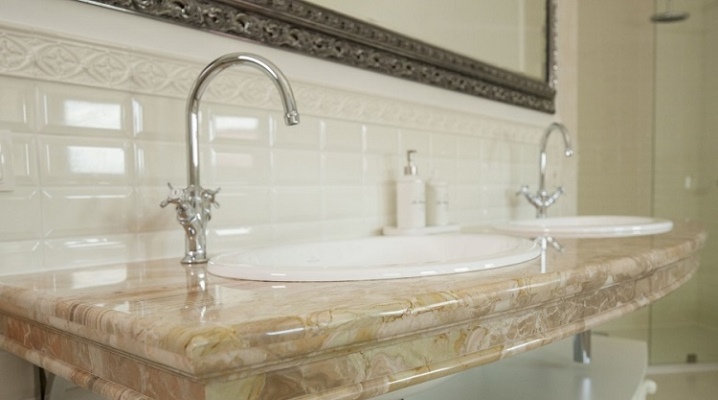
Marble countertops are a practical and beautiful solution for home interiors. They are distinguished by their stylish and expensive appearance, they have a lot of advantages. From the material of this article you will find out what exactly they attract buyers, what they are, what are the subtleties of their installation.
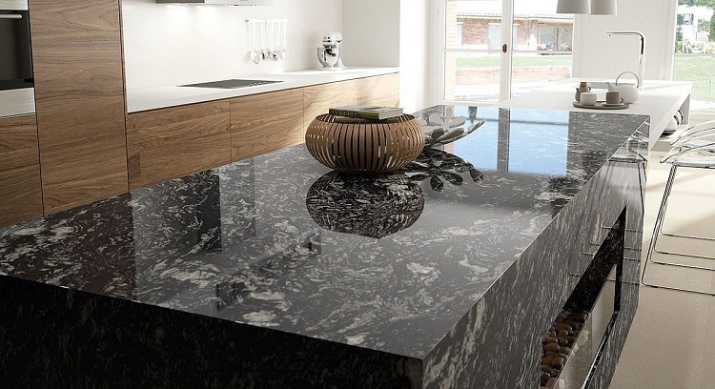
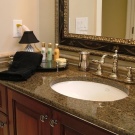
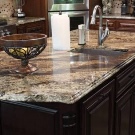
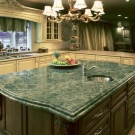
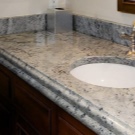
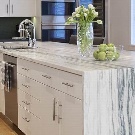
Advantages and disadvantages
Marble countertops have a number of advantages over counterparts made from other materials. They:
- give the interior a unique and noble look;
- differ in a variety of shades and patterns;
- demonstrate the status of home owners;
- characterized by expressiveness and environmental friendliness;
- are resistant to mechanical stress;
- are durable and non-toxic interior elements;
- are easy to care for, do not accumulate radiation;
- stay cool in the heat;
- have antiseptic properties;
- fit into any stylistic design solution.
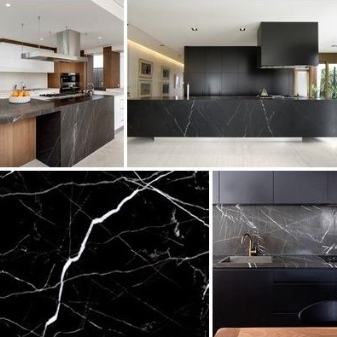
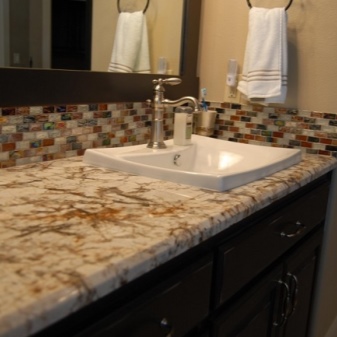
Plus, marble countertops work well with other materials (like glass, wood, ceramics, metal, and even plastic). The marble used for their manufacture lends itself to grinding and polishing. These work surfaces are perfectly smooth and anti-static. Dust does not accumulate on them.

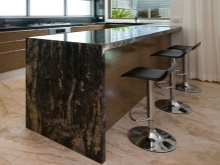
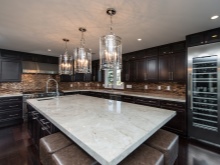
They complement the interior of a kitchen or bathroom. They are used to decorate islands of kitchen sets, separate tables or work surfaces of the modules of the lower drawers of furniture sets for kitchens. They are made from large slabs.
The porosity of the plates may differ, the smaller it is, the less susceptible the working surface is to staining. Therefore, it does not require updating any longer.
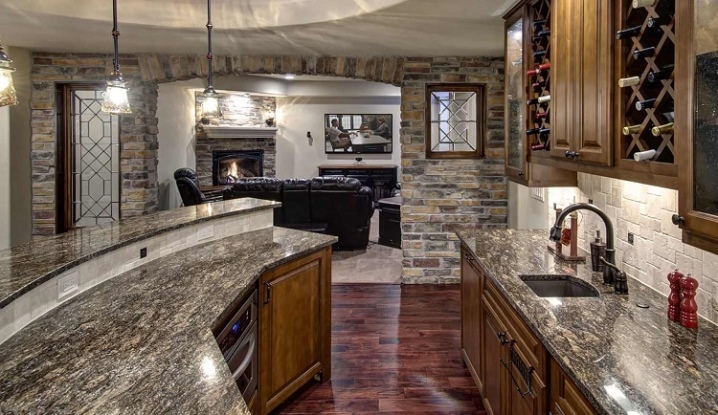
The thickness of slabs mined in quarries is most often 2-3 cm, less often it reaches 7 cm. In order to increase the thickness, manufacturers resort to joining several slabs. Some slabs are thicker. This allows you to create sinks right in them. Such a product is distinguished not only by its spectacular appearance. It is also durable when handled correctly.
In addition, today there are many protections on sale for such products that can be used regularly. If the moment is missed, you can always turn to professionals. Experts will fix the problem with grinding equipment. Marble countertops are monolithic and composite.
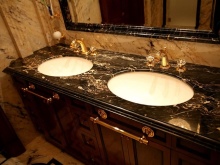
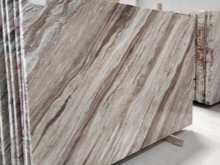
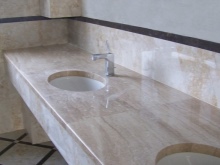
Along with the advantages, marble countertops have several disadvantages. The key one is their cost. Products made of marble are much more expensive than analogues made of acrylic, oak, granite and Karelian birch. In addition, marble countertop:
- it has an impressive weight;
- afraid of contact with hot objects;
- not resistant to staining;
- collapses from interaction with acids;
- afraid of cola and mineral water;
- collapses from pinpoint impacts.
It is difficult to restore damaged slabs. Even after gluing and polishing the work surface, the seams will be visible.
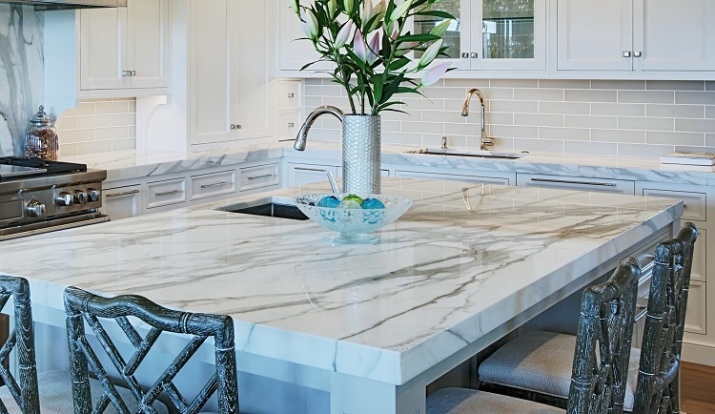

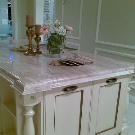

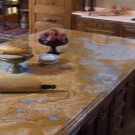
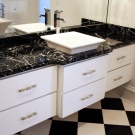
Varieties
There are many ways to classify marble countertops. For example, they differ in the type of work surface. It can be glossy, matte or even antique. Each type of surface has its own characteristics.
- Matte stone is distinguished by muted shades and a silky texture. Scratches are practically invisible on such a surface. However, this stone is not very resistant to contamination after processing.
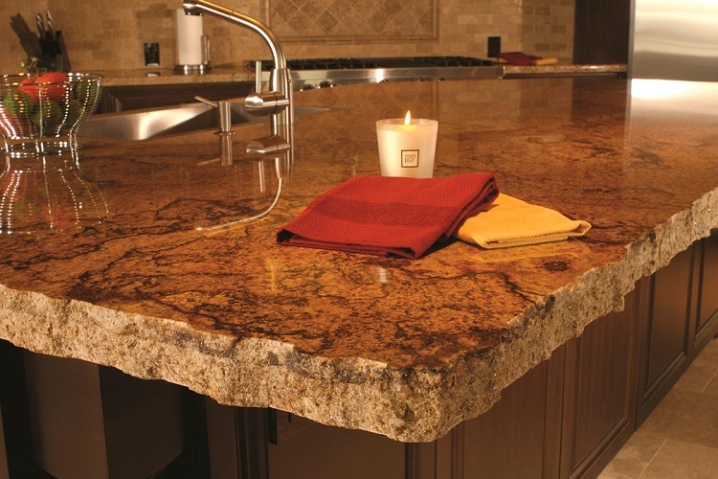
- The glossy type of surface indicates a lower porosity of the original slab. Therefore, products of this type are considered more resistant to dirt. They are considered universal, but they are more expensive than counterparts of the matt type. Unlike matte stone, such modifications are perfectly combined with any areas of interior design, gloss visually ennobles the work surface.
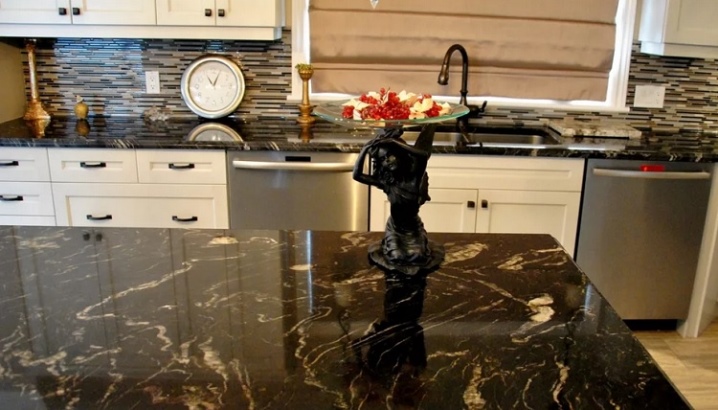
- Antique (aged) surfaces resemble leather when touched. They have a special texture and are made of dark colored stone. On such a surface, fingerprints are not visible, chips and scratches are barely noticeable.
Based on the shape, the configuration of the marble countertop can be straight, round and U-shaped.
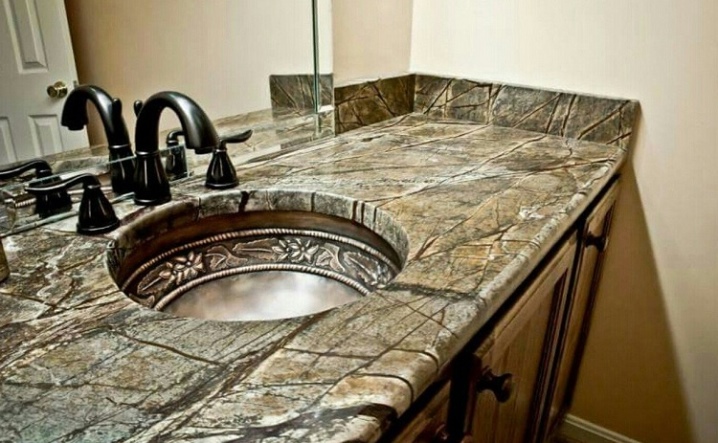
By grade and type of marble
The gradation of marble in different countries is different. For example, Italian marble is not divided into grades and categories at all, so the price is the same, and the stone is assigned 1 grade. In our country, everything depends on the quality of the marble. Sometimes the product may have unaesthetic veins, spots in the structure. Not quite beautiful tones are also considered a disadvantage.

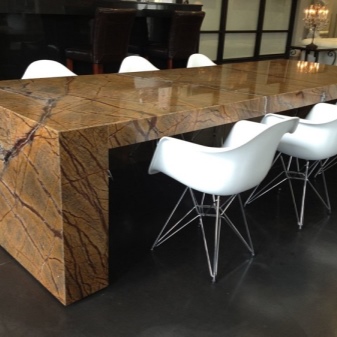
These shortcomings do not have a significant impact on the functionality of the finished product, but due to their lower aesthetics, the price can be reduced for them. However, slabs with obvious flaws that require re-polishing are also on sale. When machining, the risk of breakage of such marble is not excluded.
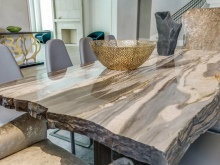
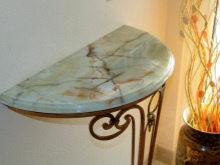

And yet there is an exception in the gradation of marble. Calacatta marble is considered a classic, its price may vary. This is due to the local scale of stone mining. The most expensive is the stone that is mined in the quarry itself. In addition, materials with maximum whiteness, beautiful patterns, and regularity of shape are valued. As a rule, such raw materials are assigned the highest category.
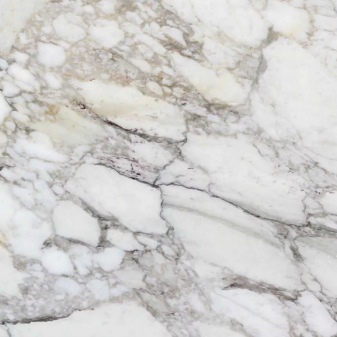

Expensive marble is also the Nero Portoro variety. This variety is very beautiful, it is not harvested in large quantities, so the price can vary between 400-1500 euros versus 200-1000 euros for the Calacatta variety. The cost is based on the size and color of the slab. The most valuable marble is the stone quarried in the territory of the city of Carrara.
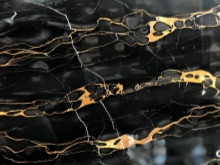
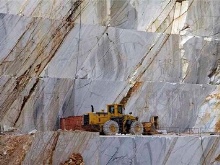

A budget type option is Botticino Semiclassico. It is mined on an industrial scale and differs in strip size. The price of such a stone is several times less than the analogs of the luxury line. Greek Thassos belongs to category 1 marble, if it is white, has no color blotches and spots. Otherwise, it is assigned category 2. If streaks are visible in it, the category changes to the third.
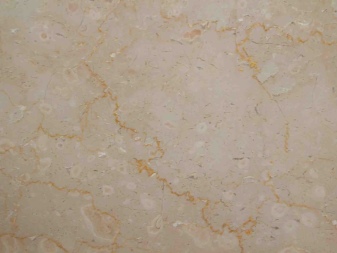

Spain also has a marble gradation. For example, 1 and the same Crema Marfil stone can have categories from "extra" to "classic" and "standard"which do not depend on technical and mechanical characteristics. It's all about structure and shade. The stone of the highest class is smooth, beige and monochromatic. If streaks and spots are visible, it is referred to the standard group. If there are many veins, this is already a "classic". In addition to the fact that the stone is natural, there are products made of artificial marble on sale. It differs in manufacturing technology and composition. Cast synthetic marble countertops are made from polyester resins. These products are durable, lightweight and moisture resistant.
Gypsum marble is made from gypsum; the basis of the ground type is crushed marble chips or fragments of white stone. Also, artificial marble countertops are made from the so-called flexible marble, which is based on acrylic polymers.
The addition of natural stone marble chips enhances the decorative qualities of any worktop made of artificial materials.

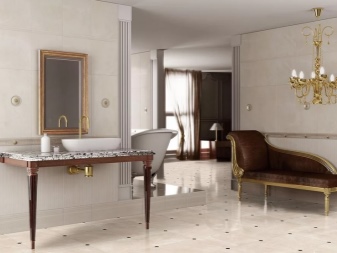
By color
The color palette of natural marble is truly diverse.
- White color is pure or with gray and yellow streaks. It visually expands the space.
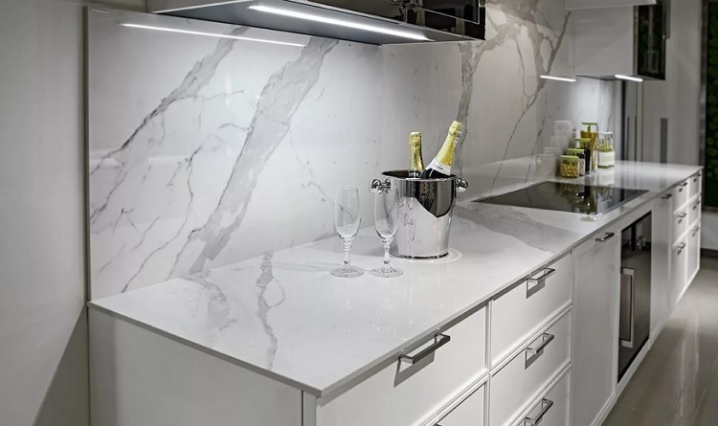
- The beige tone has a white background, a lot of light beige veins and blotches. The shade increases the price of the countertop.
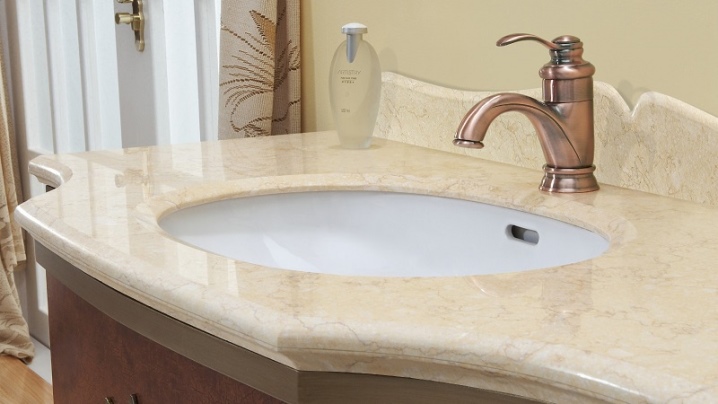
- The marble becomes golden due to limonite. Such countertops are frost-resistant and look royally expensive.
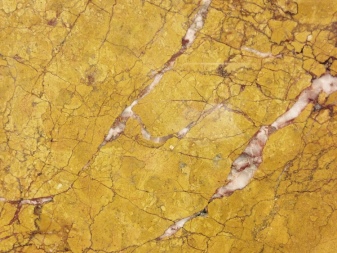

- Black products are obtained from mined volcanic marble with admixtures of bitumen or graphite. A black stone may have golden patches. A black countertop is a good solution for a modern minimalist style interior.
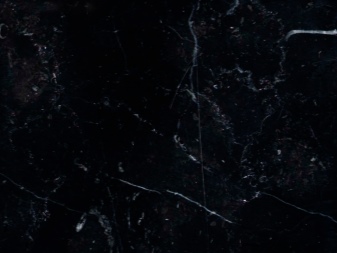
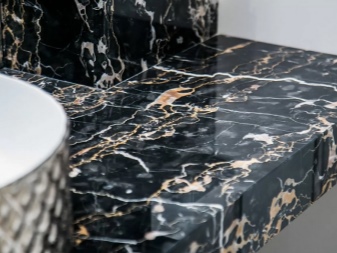
- The gray tone can be monotonous or with streaks of white, dark graphite color or with anthracite spots.
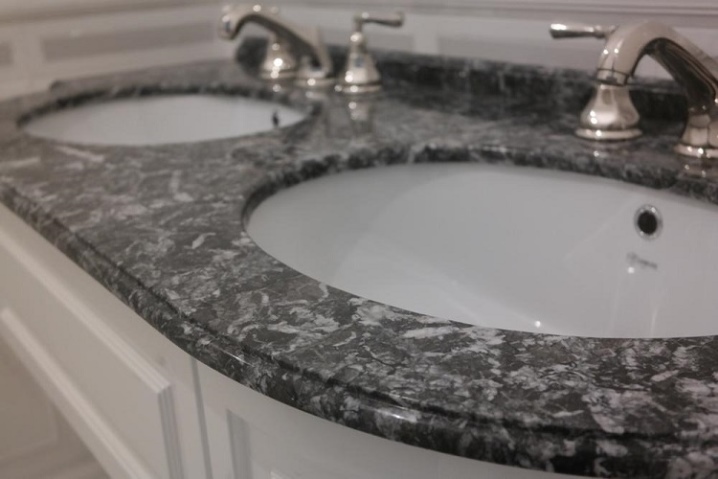
- Green marble countertops have a lot of undertones - from bright and saturated to light muted. The intensity of the color is related to the composition of the mineral.
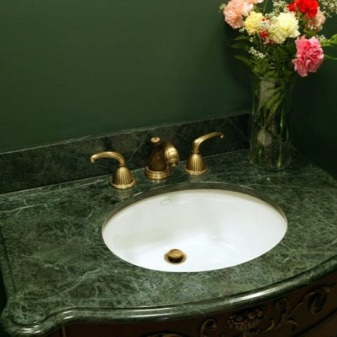
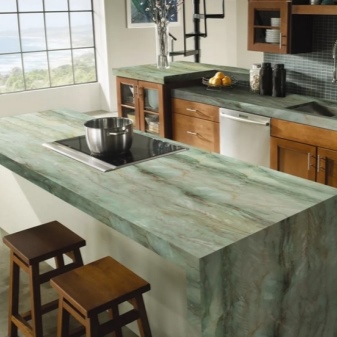
- The blue color of marble is considered rare, it includes many tones (blue, aquamarine, cornflower blue, black and blue). This is one of the most expensive types of stone.
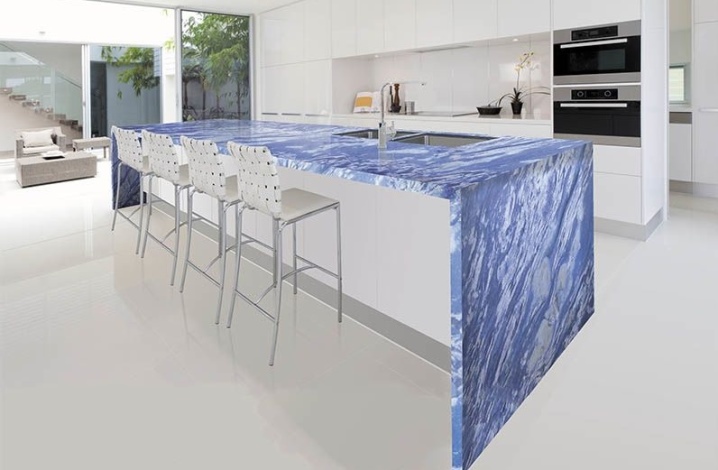
- The pink color is specific. Pink marble countertops are used in bathrooms and dressing tables.

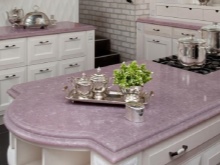
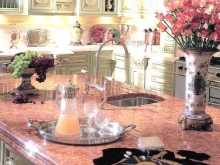
- Yellow items are rare, there are very few deposits for their extraction.
In addition, marble can be brown or silver. Choosing the right shade allows you to create accents in your kitchen or bathroom.
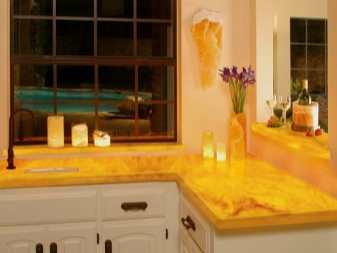
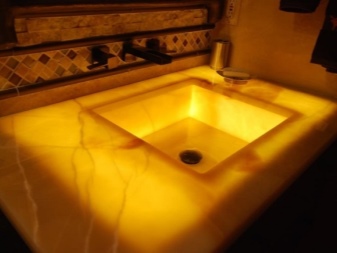
Nuances of choice
The purchase of a marble countertop must be approached thoroughly. For example, you need to buy a slab with a thickness of at least 3 cm. The edge of the surfaces of the products may vary; it is better to take a rectangular version. If the product is selected for a standard kitchen set, you need to take a 60 cm wide stove.
When ordering a large product, you need to take into account that such countertops are made of several parts. After careful processing of their edges, reinforcement and joining are performed. If the joints are designed correctly, they will be almost invisible. In addition, when buying, you need to pay attention not only to the profiles, but also to the end chamfers. It is they who will protect the edges from chips, giving the working surface an aesthetic look.
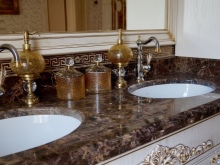
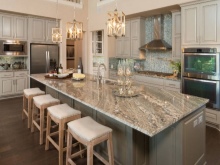

Reinforcement of joints with a rod is necessary to strengthen the attachment points of plate parts. It protects the product from damage during transportation and prolongs its life. It is used when installing narrow (up to 35 cm) long slabs (more than 2 m). It is necessary for a stone with high porosity. In addition, they reinforce those countertops in which holes are made for a sink or a kitchen stove.
You need to order the product personally in order to be able to inspect the slab from which the countertop will be cut. In the structure of other natural stones, there are inclusions of different breeds. To some, this may seem like a marriage. However, this material is the basis for various design products. Some manufacturers specialize in just such slabs.
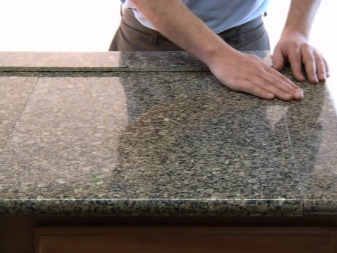
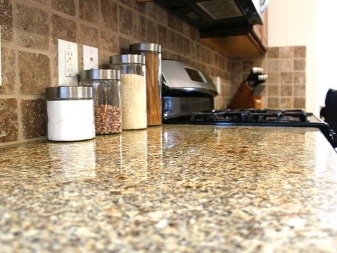
Most often, when choosing a material for a countertop, the customer proceeds from the color scheme of the stone, taking into account how it will look in a particular interior. The slab you like is examined in the warehouse, paying attention to the presence of hidden sections, veins, and inclusions.
Some customers prefer to order marble ensembles, which are a tabletop with an apron. They are made from the same material. In addition, today it is fashionable to combine a tabletop with a window sill. This work surface can be used as a dining table or shelves for various things.
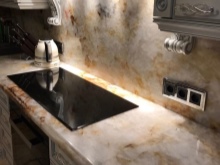
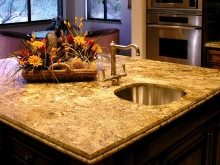
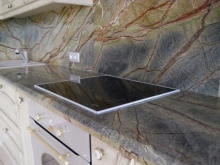
Care secrets
Over time, marble countertops lose their appeal. With improper care, they begin to fade. You need to take care of them constantly, in case of signs of tarnishing, they use preparations to update the shades, made on the basis of natural and artificial waxes, which are sold at specialized points of sale. The purchased product is applied to the surface using a cloth napkin. After 20 minutes, the remnants of the drug are removed, proceeding to polish the coating until a shine appears. However, before any preparation is applied to the marble, it is tested on a small section of the table. If self-polishing does not give results, they turn to professionals.
If any liquid is spilled onto the surface, it is removed immediately. Tea, wine, juice, coffee, vinegar can leave traces on the marble surface. After wiping the surface, the affected area is washed with clean water and wiped off with a towel. Polishing agents create a protective film that protects the coating from dirt and oxidation.
Marble countertops are not used as cutting boards. They cannot be used to cut bread, vegetables, butcher meat. Situations that can cause chipping of the coating must be avoided.
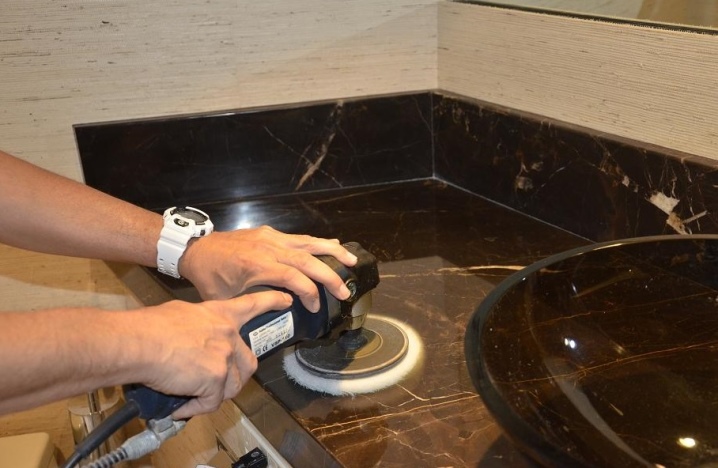
Installation features
Installation of marble countertops requires care. In the course of work, it is necessary to make a drawing indicating the dimensions of the product and its shape. The installation of the countertop on the floor boxes of the kitchen set or table is carried out together with assistants. The weight of the monolith is large, it is problematic to install it alone. When installing, you need to ensure that all structural elements are aligned to one level.
If the working canvas consists of several parts, you need to decide in advance on the joining points. It is best to dock tables near a sink or hob. In these places, it is easier to disguise them by smearing them with special glue, which will protect the joints from moisture and dirt. After the tabletop is fixed, the skirting boards are fixed on the exposed furniture.
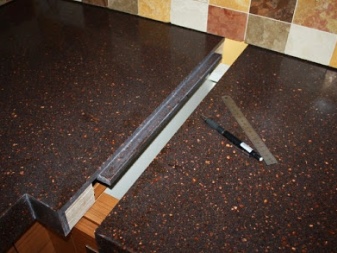
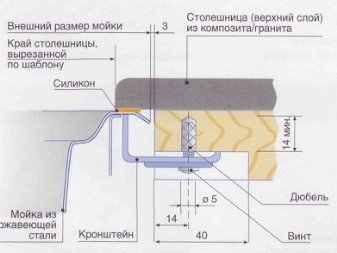
You need to install the countertop on fully assembled furniture, not forgetting about fitting and installing spacers in places where there is no level match. It is necessary to fix the working blade in 4 corners of the cast plate or each fragment. In addition, perimeter fixation is required. Dowels, self-tapping screws, and silicone sealant are used as fasteners. They try to fill the seams with epoxy to match the stone.
The last stage of installation is to cover the working surface with a protective compound. If glue residues are visible on the surface, they are disposed of with denatured alcohol. Built-in sinks are installed at the same time as the marble slab.
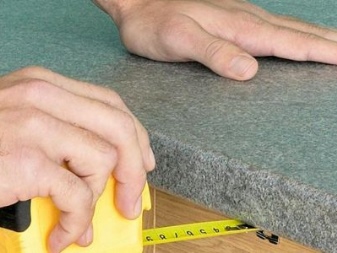
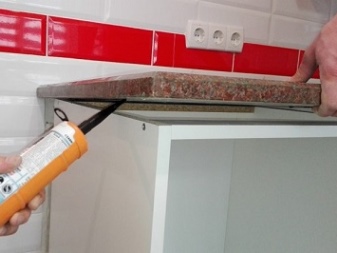
In the next video, you are waiting for the production and installation of a table top and an apron made of Italian white Bianco Carrara marble.













I have been looking for information about marble kitchen countertops for a long time. I rummaged through the entire Internet until I came across this article.
The comment was sent successfully.